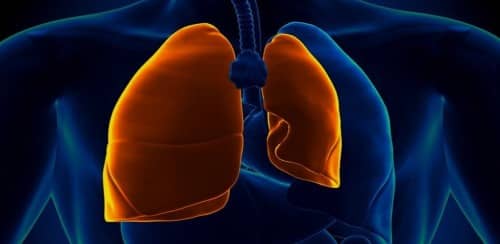Hemiplegia
What is hemiplegia
Hemiplegia is a characteristic form of disability, which can invade the right and left of the body. It is acquired by mental collapse, which has the potential to form outwardly or after a stroke . This situation arises as a result of the collapse of a part of the central nervous system that manages the performance of the tendons. Hemiplegia can form if there is a collapse of the mind or the nerves of the tail. This situation causes the tendons in the side of the body to be unable to react at all. This condition can be formed in children as an outward character. However, the majority of hemiplegic disabilities are formed in terms of personal age adequacy.
There are also those who understand that hemiplegia refers to the inability that is formed on one side of the body that is perpendicular. The term disability means helplessness towards one part of the body. In the child with the disability, weakness in the body is formed to the opposite side of the brain affected.
Diagnosis of hemiplegia
Beginning, the expert will ask questions about the history of the disability that has been or is being felt, as well as examine the strength of the tendons during physical and neurological research. The purpose of examining the strength of the tendons is so that the expert can find the site of collapse of the nervous system. In addition, experts also have the potential to carry out various methods of support and testing in order to obtain a diagnosis of hemiplegic disability
Various tests to obtain a diagnosis:
-
-
Blood testing. This test summarizes a thorough blood count that can confirm various underlying causes such as transmission, blood disorders, and cancer.
-
Computerized tomography transfer. The test is a robust, noninvasive imaging method that combines X-rays with computer technology and has the potential for illustration to be obtained from any perspective.
-
MRI. The test represents a non-invasive and highly sensitive and highly precise method that uses electromagnetic groups to obtain accurate circuit illustrations.
-
EEG. This test can be used for diagnostic purposes by assessing the electrical activity of the brain. EEG is very useful for finding the initial tension in the brain by reviewing electrical activity.
-
Causes of hemiplegia
There are a number of conditions that can lead to hemiplegic disability. For example, the causes of hemiplegia include stroke, brain trauma, tail frame trauma, transmission, various other conditions that disrupt the central nervous system. The defect represents an oddity of the nervous system, not found by trauma to the affected part of the body. For example, trauma to the coccyx or the brain disrupts the body’s ability to surrender and get signals to areas of the body affected by trauma. So even if the left or right side of the body does not collapse quickly, trauma to the back frame can cause hemiplegic disability.
The most common cause of disability from both traumas is stroke. Stroke disrupts blood flow to the brain. When areas of the brain that interfere with movement or responses are affected, hemiplegia can develop. The affected area is usually the opposite of the affected part of the brain, so trauma to the right side of the brain will confuse the left side of the body.
Various causes of hemiplegia:
-
Brain transmission similar to meningitis
-
Barah
-
Neuronal collapse is due to Parkinson’s-like degenerative disorders
-
Traumatic injury, similar to a blow to the head during a vehicle collision
-
Congenital disorders similar to cerebral palsy
Rare psychological conditions can manifest as hemiplegia. If the matter is formed, the expert must respond to psychological matters not a sign of reality.
Symptoms of hemiplegia
The predominant symptom of hemiplegia is incapacity of the tendons and inability to one side of the body. The severity of the disability depends on the personality and the inadequacy of the brain.
Clinical symptoms of hemiplegia:
-
Trouble moving
-
The instability depends on the side that is affected
-
Insufficient or even non-existent motor skills in the affected arm and heel.
Other signs that can confuse the brain:
-
Speech difficulty
-
Optical matters
-
Behavioral matters
-
Trouble analyzing
-
Tense
-
Resilient growth and understanding
Types of hemiplegia
The majority of people do not understand or know what hemiplegia is. Sometimes just understand about the defects in the tendons and muscles. Initially, the victim did not understand the various hemiplegic disabilities. Viewed from the definition of hemiplegia, it symbolizes a state of inability or the loss of the ability to walk which is formed on one part of the body. This disability also results in muscle violence.
Various hemiplegic defects:
-
Contralateral hemiplegia. A handicap whereby an inability to form against an opposing body is formed until brain collapse is formed.
-
Hemiplegia as a child. Hemiplegic disability is usually affected when the age of 18 months turns to childhood.
-
Facial hemiplegia. Symbolizes the defect formed in advance. This disability formed on the face finds the incapacity of the facial veins on the face.
-
Tail frame hemiplegia. This defect in the tail skeleton is also known as brown-sequard syndrome. This type of hemiplegia invades one side of the caudal marrow, resulting in an inability to the side of the body where the trauma was formed.
Hemiplegia treatment
Hemiplegic disability is irreversible, but the majority that can be done undermine the impression and help the child touch his skills. The definition of hemiplegia and knowledge of how the victim’s ability to help children touch his skills is very dominant. Usefulness of excellence that responds to these defects. Ask the victim a question and make sure he is able to understand. But usually experts will suggest a variety of medical treatment arrangements as well as a variety of training for victims of hemiplegic disabilities.
Treatment of hemiplegia involves a multi-pronged approach, usually occupational therapists and physicists are very dominant in restoring the benefits of hemiplegic disability victims. Treatment is intended to increase feelings and motor skills, so that victims are able to carry out daily activities.
Various treatments for hemiplegic disability:
-
Herbs. Herbs can be used to treat signs and underlying causes. Other ingredients are used to treat seizures after brain trauma.
-
Neuromuscular electrical stimulation. The method uses upper-intensity electrical excitation to protect the value and benefits of the veins.
-
Surgery. Surgery is predominantly centered on the treatment of secondary cases. This includes the vein response, the collapse of the tail frame.
-
Alternative healing. Alternative healing is similar to recovery using acupuncture.
Reference
-
CHASA: Hemiplegia: https://chasa.org/medical/hemiplegia/
-
MeD India: Hemiplegia: https://www.medindia.net/patientinfo/hemiplegia.htm
-
Spinal Cord: Hemiplegia vs Hemiparesis: Causes, Symptoms, and Treatment: https://www.spinalcord.com/blog/what-is-the-difference-between-hemiplegia-and-hemiparesis
-
Tripboba: All About Hemiplegia: Definition, Types, Causes, Symptoms, and Treatment: https://www.tripboba.com/article_health_what-to-know-about-hemiplegia-the-definition-types-causes-symptoms-and-treatment .html







